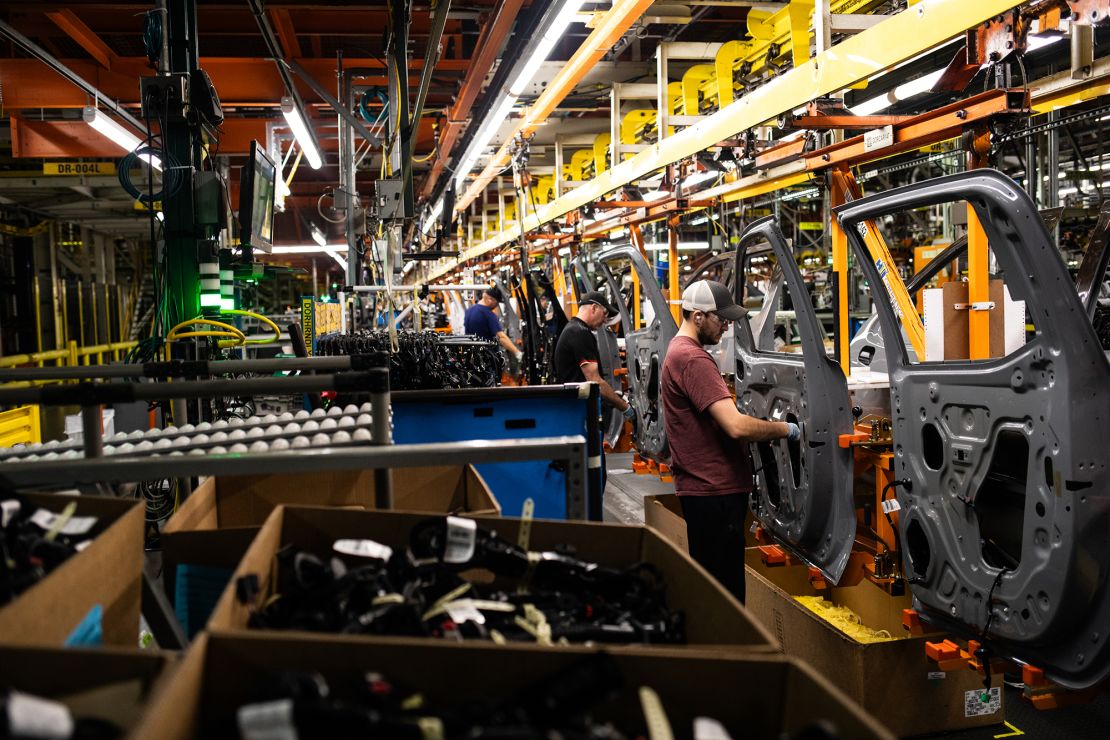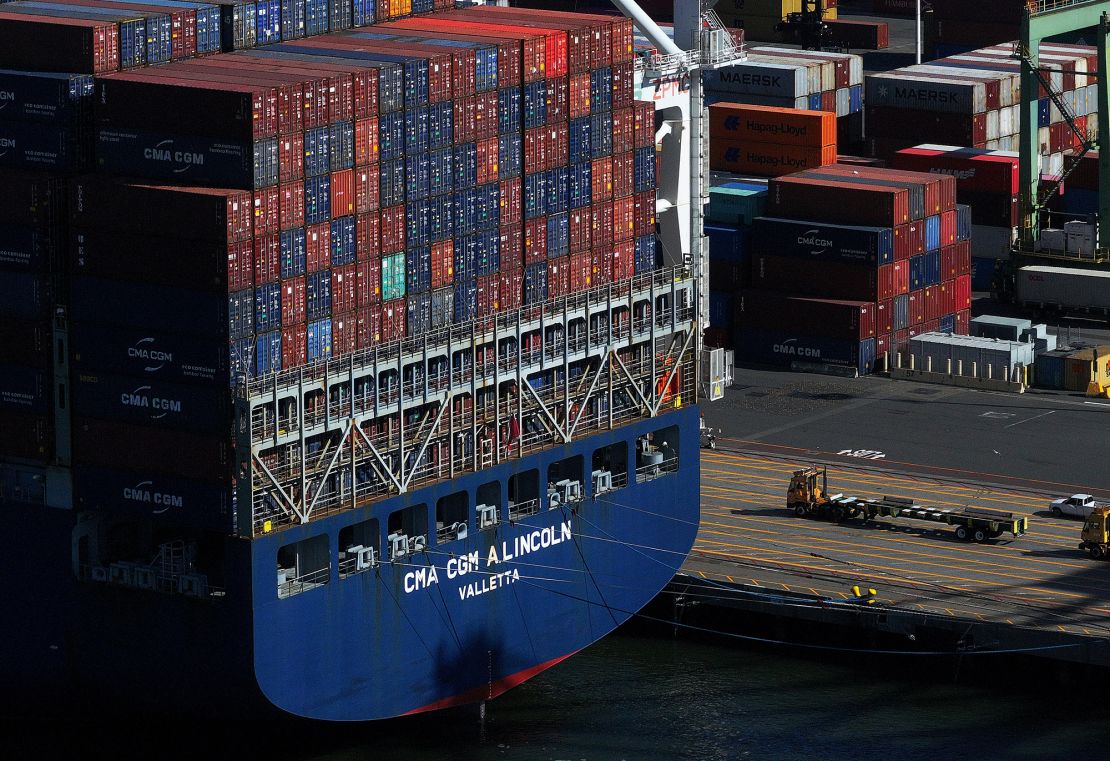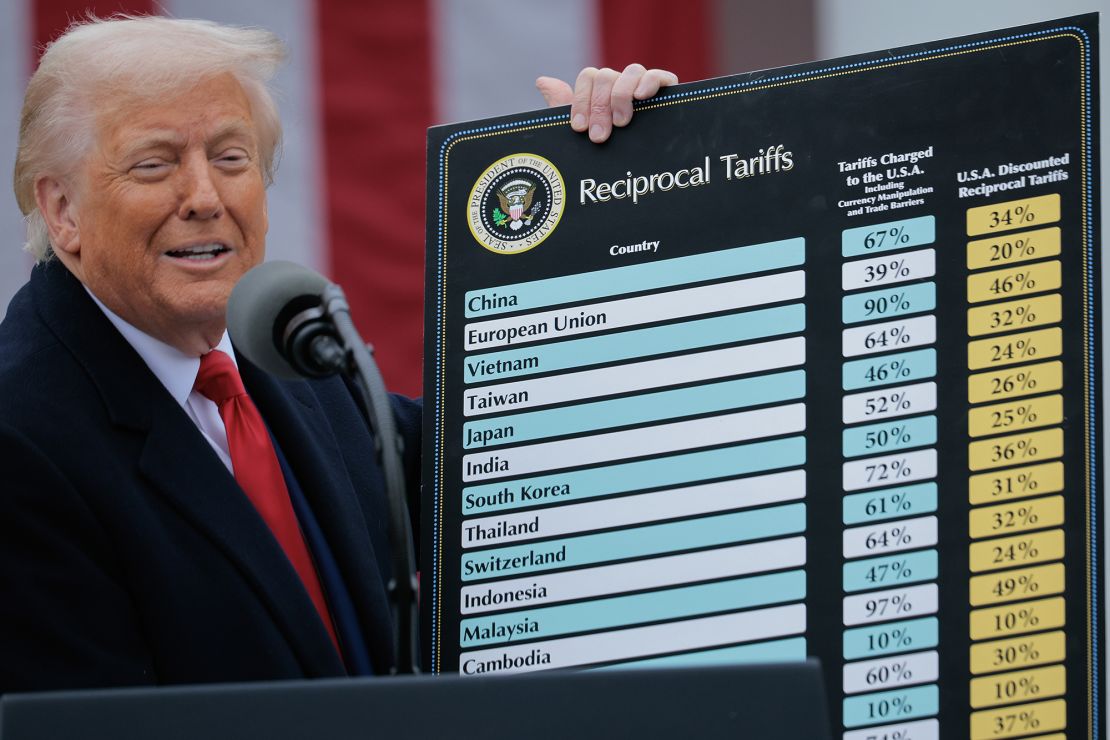CNN
—
President Donald Trump and his administration are racing to get trade deals done ahead of a self-imposed deadline, at which point tariffs are set to rise for dozens of countries across the world.
News about the on-again, off-again tariffs has become such a daily fixture of the second Trump administration that, at times, it can be hard to remember why the president started down this path in the first place. Trump has given many different reasons for why he believes tariffs are a crucial part of his policy agenda, but they can be categorized into four main goals:
Restore America’s manufacturing prowess.
Grow US revenue.
Equalize the balance of trade.
Pressure foreign countries into setting policies that benefit the United States.
Trump has often treated tariffs like a panacea — a catch-all economic tool that can simultaneously restore blue-collar jobs, pay off the US deficit, bring foreign nations to heel on key disputes and reduce Americans’ tax burdens.
In his first months in office, Trump has used tariffs to make progress on each of those goals.
Some companies have announced that they’ll invest in US factories, citing the costly tariffs. Tens of billions of dollars of tariff revenue are coming in to the United States every month. America’s trade deficit was cut in half in April — a dramatic decrease. And Trump has brought several countries to the negotiating table after threatening high tariffs — all without dramatically increasing inflation.
However, early indicators of success may be more of a sign of an initial shock to the system, as companies, consumers and businesses make rapid adjustments to the new reality of higher US tariffs.
Economists and business leaders maintain that tariffs probably won’t lead to a major American factory boom. They argue revenue from tariffs will remain a drop in the bucket compared to the massive budget deficit that was just exacerbated by Trump signing his expensive domestic policy agenda and tax cuts into law. Tariffs and trade deals probably won’t dramatically increase demand for US goods in foreign countries. And some trading partners have already shown there’s a limit to how much tariff threats can achieve.
“I’m telling you, you just watch. We’re going to have jobs. We’re going to have open factories. It’s going to be great,” Trump said on Air Force One in March.
To accomplish that, Trump has often advocated for lower taxes at home and higher taxes for goods made abroad.
Trump during his joint address to Congress in March made an oft-since-repeated threat: “If you don’t make your product in America, … under the Trump administration, you will pay a tariff and, in some cases, a rather large one.”
Trump has notched a handful of early PR victories after imposing tariffs. Apple in February said it would invest $500 billion in US manufacturing. GE Appliances said last month it would also spend a half a billion dollars to move a factory from China to make washing machines in the United States. And General Motors said in June it would spend $4 billion to increase its production in the United States. Many other companies have made similar announcements.

However, many of those decisions were made prior to or independently of Trump’s tariffs, the companies say. That’s because factories can take years to plan, build and begin operations.
Another major complication: Skilled manufacturing labor is hard to come by in the United States. That’s why in May, the Labor Department reported 414,000 job openings in the manufacturing sector: There just aren’t enough people in the United States who want to or are skilled enough to complete the work. And American labor can be much more expensive than in other countries. That’s why some industry experts estimate the cost of an iPhone would surge to over $3,000 if it were made in the USA.
Meanwhile, manufacturing jobs are not booming — quite the opposite. After Trump declared victory with gains of 9,000 manufacturing jobs in his first two full months in office, they have since tumbled by 7,000 jobs in each of the past two months, and the number of manufacturing jobs is now lower since Trump took office than when he started.
Tariffs may ultimately help to restore some manufacturing in America. But as Trump routinely reminds companies: If you make products in America, you pay no tariffs. That means if companies do as Trump asks, then America can’t raise tariff revenue from them.
Trump has made astronomical estimates about how much money tariffs can raise, arguing tariffs could bring in trillions of dollars in annual revenue.
“We’re going to make a lot of money, and we’re going to cut taxes for the people of this country,” Trump said before boarding Air Force One for his return from Pope Francis’ funeral in April. “It’ll take a little while before we do that, but we’re going to be cutting taxes, and it’s possible we’ll do a complete tax cut, because I think the tariffs will be enough to cut all of the income tax.”
To accomplish that, tariffs would need to be exceedingly high — significantly higher than the already historic levels at which the Trump administration has set them today, or even the 60% to 70% Trump threatened to impose on some countries beginning in August.
The federal government raises about $3 trillion a year from income taxes. The United States also happens to import around $3 trillion worth of goods annually. So that means tariffs would have to be at least 100% on all imported goods for the levies to replace income taxes, said Torsten Slok, chief economist at Apollo Global Management.

It’s not quite that simple: Demand would fall as prices rise. So Slok estimates tariffs may have to be set at 200% to replace all federal income tax revenue.
Tariffs aren’t bringing in anything close to that amount right now: The Treasury Department said Trump has raised less than $100 billion in tariff revenue since taking office, bringing in around $20 billion a month in each of the past several months.
But there’s a problem: Some of the most punishing tariffs aren’t designed to remain in place that long. The Trump administration, for example, has placed 25% tariffs on Canada and Mexico and 20% on China to incentivize them to reduce the flow of fentanyl into the United States. If that is successful, Trump has said the tariffs will “come off.” And his trade deals are set to lower the tariff rate on some countries’ goods and services — not raise them.
Trump has often spoken about tariffs in terms of “fairness,” saying other countries are “ripping off” Americans with high trade barriers. He has repeatedly said he envisions America as a highly desirable department store and views tariffs as a “cost of doing business in America.”
As a result, Trump on April 2 introduced “reciprocal” tariffs, which were calculated by effectively measuring America’s goods trade deficit with foreign countries and cutting that in half. So the countries from which America imported a large number of goods but exported little were punished with the highest reciprocal tariffs.
When America is charged a higher tariff and has a trade imbalance with other countries, Trump has often incorrectly labeled that a “subsidy” or a “loss.” But economists largely agree that trade deficits are not losses or subsidies. In fact, they can be a reflection of a strong economy.
Nevertheless, Trump’s tariffs initially had a major effect on the goods trade deficit, narrowing it from about $130 billion in April to around $60 billion in May, according to the US Commerce Department. US imports tumbled, primarily as 145% tariffs the Trump administration imposed on Canada created an effective blockade on Chinese goods entering the United States. The trade gap widened again in May after tariffs fell on Chinese goods and as foreign countries reduced their purchases of US exports.
Over time, however, tariffs aren’t likely to meaningfully narrow the trade gap America has with other countries, economists argue. Many countries make goods more cheaply in other countries, and many products simply cannot be grown or produced in America.
If the trade gap continued to fall, it could be a signal that America’s spending power was diminishing.

Trump has repeatedly threatened tariffs as a kind of anvil dangling over the heads of countries, companies or industries. The subjects of Trump’s tariff threats have, at times, immediately come to the negotiating table.
The most recent example was last week, when Canada backed off its digital services tax that was set to go into effect. Trump had railed against the tax on online companies, including US corporations that do business in Canada. He threatened to end trade talks with America’s northern neighbor. Trump also said he would set a new tariff for Canada, which ultimately backed down, saying it would drop the tax to help bring the countries back to the table.
But it doesn’t always work. Trump’s tariffs have not stopped the flow of fentanyl into the United States, although that was always an unreasonably lofty goal. The threat of tariffs has also failed to convince Apple to bring iPhone manufacturing to the United States, Hollywood to make more movies in Los Angeles, or US automakers to close their Canadian and Mexican factories.
If and when targets of tariffs ultimately acquiesce to Trump’s demands, those tariffs also have to go away, which hurts the administration’s revenue-raising goals.
Trump has notched several early wins with his tariffs — both politically and economically. But, in the long run, tariffs probably can’t achieve all of his lofty goals at the same time. That’s because Trump’s aims are often contradictory.
For example, if tariffs are a pressure campaign, they have to go away once the countries acquiesce — meaning there will be no tariffs to restore the trade balance. If tariffs are designed to promote America’s manufacturing sector, they can’t also raise revenue to offset deficits. If Americans switch to made-in-the-USA goods, then who pays the tariff on foreign products?
When used effectively, tariffs can help boost production at home by making foreign goods more expensive. Because America is an enormous and diverse economy that doesn’t rely on trade as much as its neighbors, the United States could use tariffs to inflict serious damage on other countries’ economies without plunging itself into a recession. Revenue raised by tariffs could help offset some of its deficits.
Achieving all those outcomes simultaneously, however, may not be possible.

